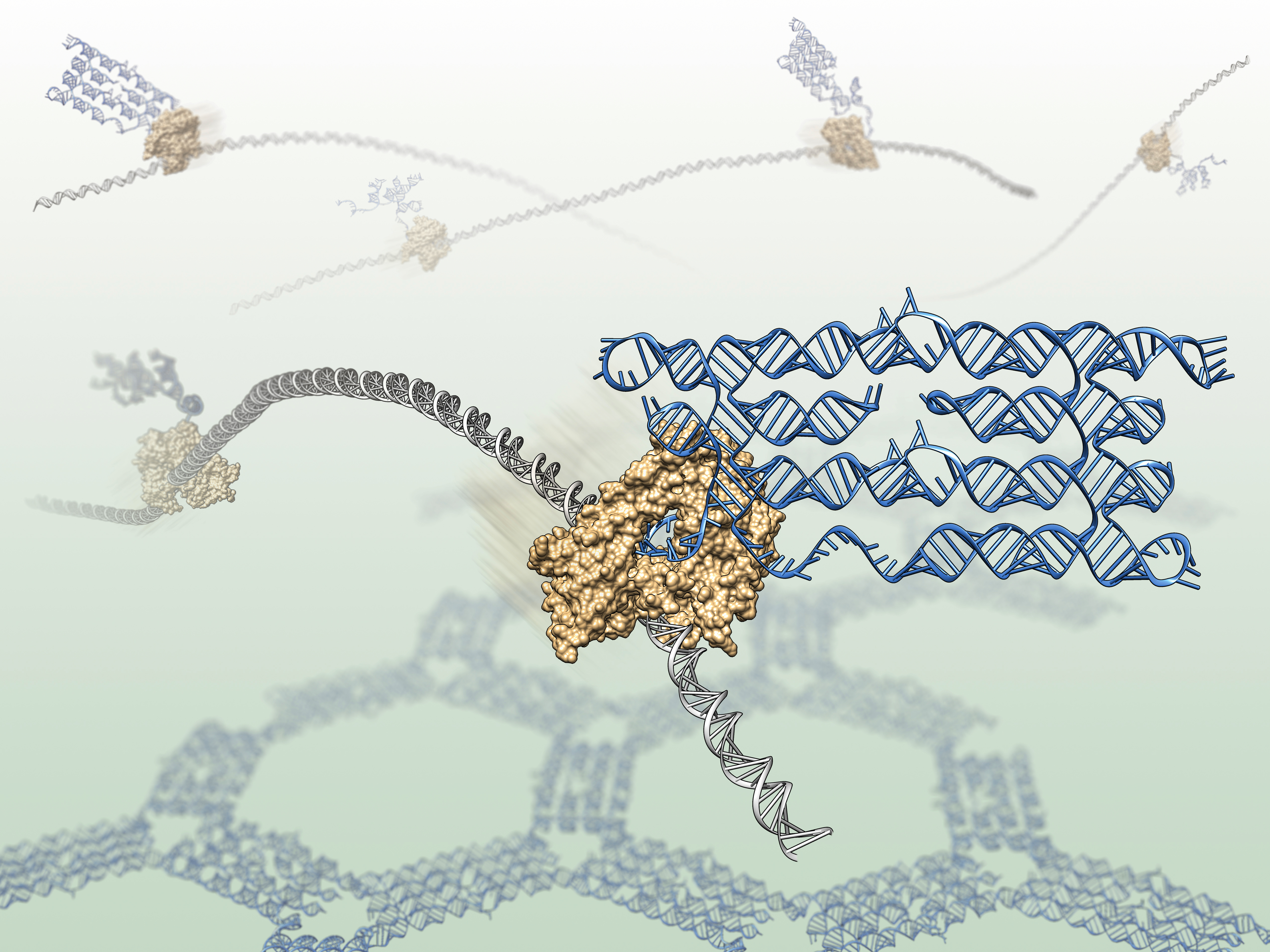EUR 2 million grant to RNA origami research
Assistant professor Ebbe Sloth Andersen from MBG and iNANO has received EUR 2 million from the European Research Council (ERC). This grant will help him bring biological nanostructure research into a new phase in the field of synthetic biology – a field which may ultimately have enormous significance for the medicine, energy, food and agriculture of the future.




RNA molecules, enzymes, proteins, chemical compounds and synthetic genes. The building blocks Ebbe Sloth Andersen is experimenting with are miniscule. But their biotechnical potential is enormous. Andersen has just received an ERC Consolidator Grant to develop his research on ‘RNA origami’, a promising new technique within synthetic biology, a new field of research that may ultimately lead to cheaper and better medicine, sustainable fuel production, healthier crops and clean water, to name just a few examples.
“With this technique, I believe that we can organise and program biological processes in a completely new way, which will contribute to the development of the field of synthetic biology,” says Andersen.
The technique with the evocative name RNA origami is an internationally recognised method Andersen has developed in his research group. The method derives its name from the Japanese art of folding paper, origami, which transforms a single piece of paper into a complex figure using geometrically folded forms and patterns. In RNA origami, a single RNA molecule is folded into a well-defined nanostructure, for example a box. In this case, the forms and patterns are encoded into the RNA itself, and the desired structure is created on the basis of the code.
Cells as chemical factories
With the new ERC grant, Andersen will be able to refine the techniques for creating these nanostructures, and his major objective is to investigate how to develop RNA origami from a process taking place in a test tube to a process taking place within living cells.
“It would be a major step if we could create these nanostructures in bacterial cells, for example. You can view the cell as a factory that can produce chemical compounds. My goal is to come up with some new cogs that can improve the production process,” explains Andersen, who will use the grant to put together a research team with two post docs and two PhD students who will dedicate a five-year period to developing and refining RNA origami techniques.
This progress in cellular nanotechnology will potentially lead to cheaper, better and more sustainable solutions at the intersection of biotechnology and nanotechnology. In popular terms, it’s about producing chemicals using biologically processes. An example is producing medicines by using the technique to organise enzymes so that bacterial cells increase their production of medically relevant compounds. The technique might also be used to develop biosensors that can improve diagnostics, or to develop medical nanoparticles with strong bonds that can make a medicine more effective and specific.
39-year-old Andersen has been researching nanostructures since 2007, and despite his youth, he already has an impressive research career behind him: in 2011, he received a grant from the Danish Sapere Aude programme for elite researchers, and he has been a guest researcher at the California Institute of Technology several times. ERC Consolidator Grants are awarded to support younger researchers in establishing their research teams and continuing to develop a successful career in Europe.
FACTS
RNA origami
RNA origami is a method for organising a single strand of RNA into complicated shapes, so-called nanostructures. The method was developed in Ebbe Sloth Andersen’s lab and first reported in 2014. The instructions for folding the nanostructures are encoded into a DNA molecule, and the origamis are then automatically produced by adding the enzyme RNA-polymerase, which means that RNA origamis can be produced biologically in cells. By contrast, the well-established DNA origami method requires hundreds of chemically synthesised DNA strands as well as heat to form the desired nanostructures, which means the process cannot take place within a cell.
Synthetic biology
Cellular nanotechnology is part of the new research field called synthetic biology, which some experts are calling the next great technological revolution. Synthetic biology combines biology and engineering, drawing on a variety of disciplines from both fields. Synthetic biology can be defined as the artificial design and construction of engineered biological systems for a variety of purposes.
Contact
Assistant professor Ebbe Sloth Andersen
iNANO and Department of Molecular Biology and Genetics
Aarhus University, Denmark
esa@inano.au.dk, +45 4117 8619
